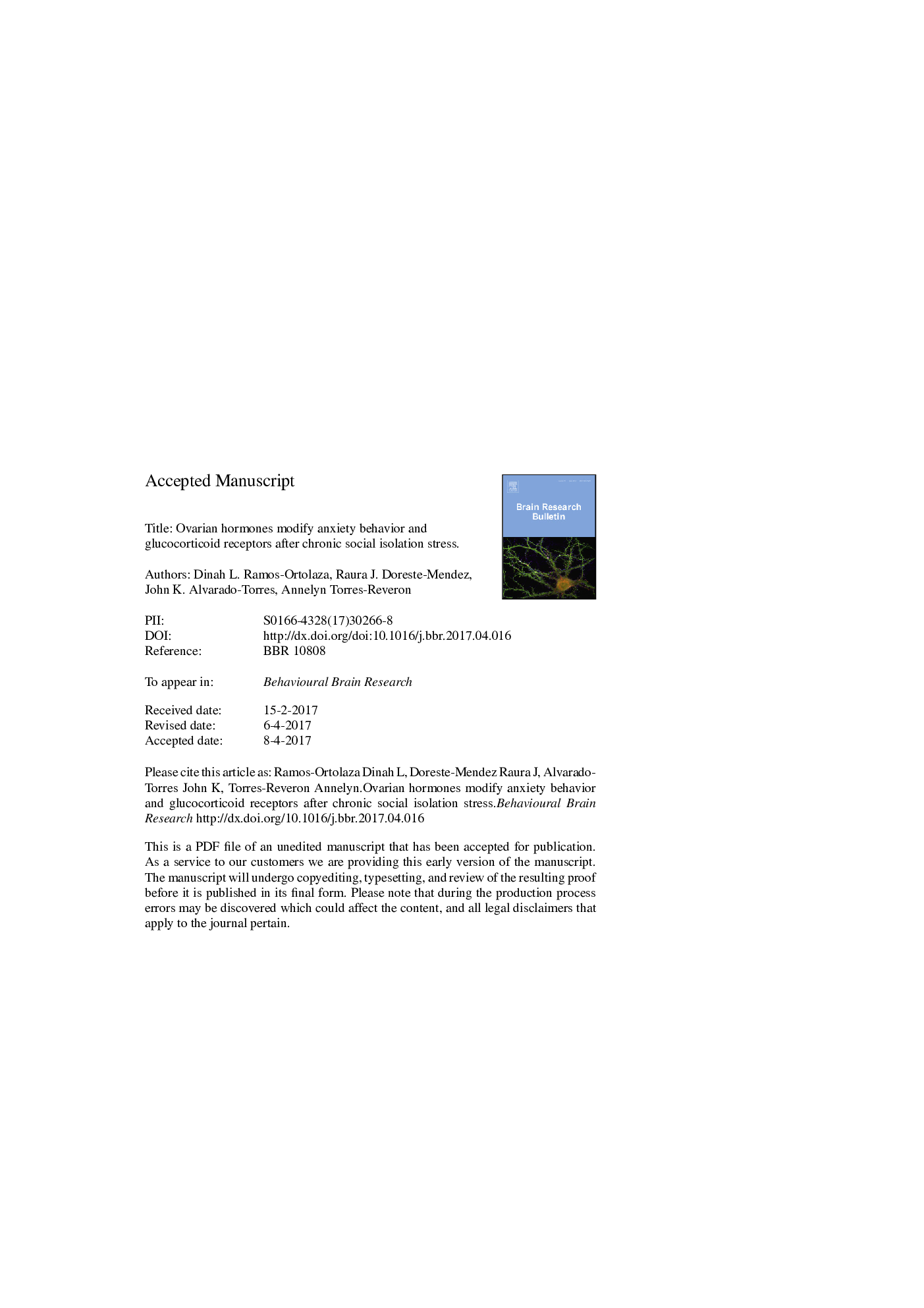| Article ID | Journal | Published Year | Pages | File Type |
|---|---|---|---|---|
| 5735158 | Behavioural Brain Research | 2017 | 34 Pages |
Abstract
Chronic social isolation could lead to a disruption in the Hypothalamic-Pituitary-Adrenal (HPA) axis, resulting in anxiety and depressive-like behaviors but cycling estrogens could modify these behaviors. The aim of this study was to determine if changes in ovarian hormones during the normal cycle could interact with social isolation to alter anxiety and depressive-like behaviors. In parallel, we examined the expression of glucocorticoid receptor (GR) and synaptic vesicle protein synaptophysin in the hippocampus and hypothalamus of Sprague Dawley normal cycling female rats. We assigned rats to either isolated or paired housing for 8 weeks. To assess anxiety and depressive-like behaviors, we used the open field test and forced swim test, respectively. Female rats were tested at either diestrus, estrus, or proestrus stage of the estrous cycle. After behaviors, rats were perfused and brains collected. Brain sections containing hippocampus and hypothalamus were analyzed using immunohistochemistry for synaptophysin and glucocorticoid receptor (GR) levels. We found an increase in depressive-like behaviors for isolated animals compared to paired housed rats, regardless of the estrous cycle stage. Interestingly, we found a decrease in anxiety behaviors in females in the estrus stage accompanied by a decrease in GR expression in hippocampal DG and CA3. However, no changes in synaptophysin were observed in any of the areas of studied. Our results support the beneficial effects of circulating ovarian hormones in anxiety, possibly by decreasing GR expression.
Related Topics
Life Sciences
Neuroscience
Behavioral Neuroscience
Authors
Dinah L. Ramos-Ortolaza, Raura J. Doreste-Mendez, John K. Alvarado-Torres, Annelyn Torres-Reveron,
